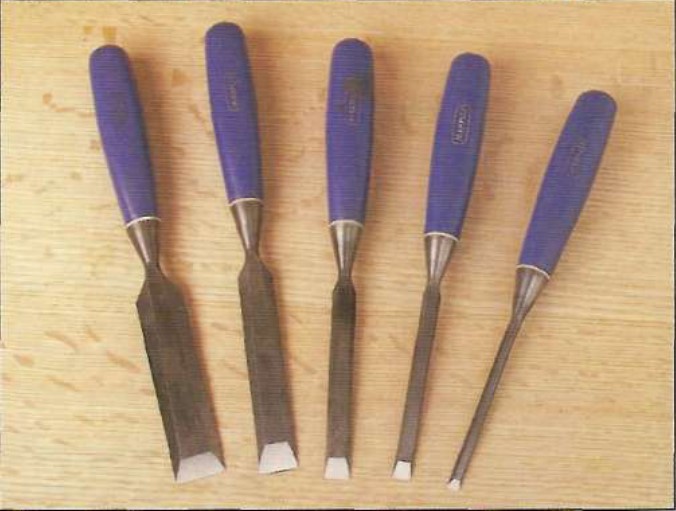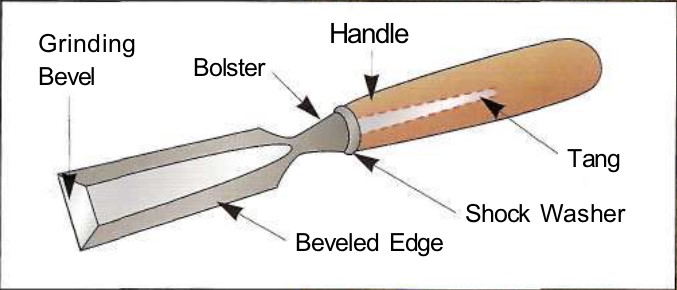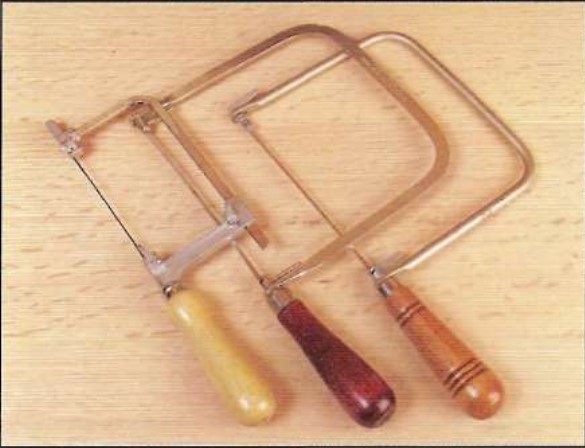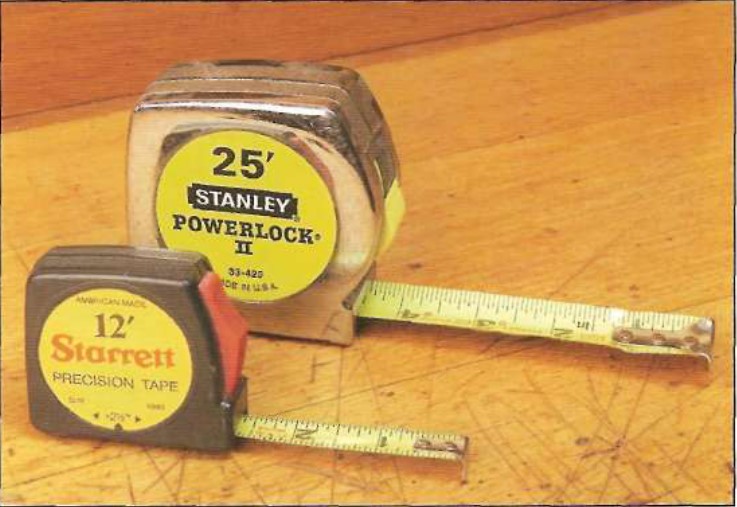When I say “chisel,” the image that pops into most woodworkers’ minds is a beveledged chisel like any of those shown in the top photo. It’s ironic that these chisels have been marketed so long as bevel-edged that most people don’t realize that these are actually firmer chisels. What’s really odd is that many woodworkers…
CHISEL TERMINOLOGY
Chisels can be broadly classified into two groups: those designed for use with hand pressure only, and those intended to be driven by a mallet. Chisels made for hand use only may be either firmer chisels (originally called “former” chisels because they were used to form rough shapes) or paring chisels. Mallet-driven chisels are mostly…
COPING AND FRET SAWS
Coping and fret saws are yet other types of frame saws where the blade is held in a tensioned frame that is adjustable. Most coping saws accept a 65/8″-long, very thin, narrow blade with fine teeth—typically 15 to 32 teeth per inch. Fret saws often have deeper throats or an adjustable frame, and accept blades…
TAPE MEASURES
I’m sure that when Alvin J. Fellows patented the steel tape measure in 1868, he didn’t expect that his invention would turn out to be one of the most useful of all tools to the woodworker. Although his tape measure didn’t have a locking mechanism for the tape (this was patented by Stanley in 1968),…
MARKING TOOLS
If you were to ask most woodworkers what the foundation of accuracy is, they’d likely say the ruler, the tape measure, or the square. But I’ve always felt it’s the marking tools you choose. Granted, the rule, tape measure, and square are essential to precision; but without a clean, crisp marking tool, all their accuracy…





